#Reserve Bank Of India
Photo




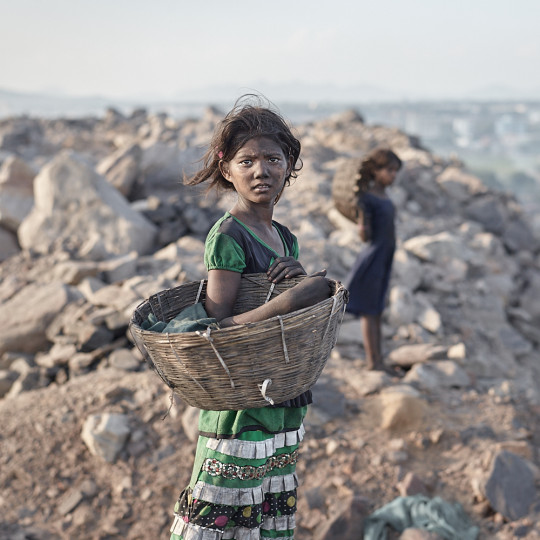



“It is an apocalyptic landscape. There are huge man-made craters everywhere that make up the visible landscape, the ground is burning, and a vast area is oozing of toxic gases, fires and smoke. In all of this people are digging in the soil with their bare hands. Coal is mined everywhere in Jharkhand, India, and large parts of it is sorted by hand. The locals call it: ”Black Diamond”.
Sebastian Sardi - documentary photographer from Sweden
Photos taken in Jharkhand - India - 2018
#Sebastian Sardi#documentary photography#reserve bank of india#Contemporary Photography#contemporary exploitation#pollution#coal mining
58 notes
·
View notes
Text
RBI GOLD : RBIનું મોટું પગલું, વર્ષોથી ઇગ્લેન્ડ પાસે પડેલું 100 ટન સોનું ભારત પાછું લાવશે,આગામી મહીને હજુ આમાં વધારો કરાશે
RBI GOLD : રિઝર્વ બેંક ઓફ ઈન્ડિયાએ સોના (GOLD) ને લઈને મોટું પગલું ભર્યું છે. સેન્ટ્રલ બેંકે ઇંગ્લેન્ડથી લગભગ 100 ટન સોનું ભારત પાછું લાવી રહ્યું છે. આ સાથે RBI આવતા મહિનાઓમાં હજુ વધુ સોનું ભારતમાં પાછું લાવશે. 1991ની પછી આ પ્રથમ વખત છે જ્યારે આટલી મોટી માત્રામાં સોનું RBIની તિજોરીમાં જમા કરવામાં આવ્યું છે. પૂર્વ પીએમ ચંદ્રશેખરના સમયમાં ભારતે પોતાનું સોનું અન્ય દેશોમાં ગીરવે રાખવાની ફરજ પડી હતી…

View On WordPress
#gujarat#india#100 tonnes of gold#100 टन सोना#100 ટન સોનું#big step#bjp#central bank#England#gold#INDIA#India will bring back 100 tonnes of gold#rbi#RBI GOLD#RBI का बड़ा कदम#RBI નું મોટું પગલું#RBI&039;s big move#regarding gold#Reserve Bank of India#इंग्लैंड#गुजरात#भारत#भारत 100 टन सोना वापस लाएगा#भारतीय रिजर्व बैंक#सेंट्रल बैंक#सोने को लेकर बड़ा कदम#આરબીઆઈ#ઈંગ્લેન્ડ#ગુજરાત
0 notes
Text
RBI's Latest Innovations: Retail Direct Mobile App and Fintech Repository Unveiled
The Reserve Bank of India (RBI) has embarked on a path of technological advancement with the launch of three significant initiatives: the PRAVAAH portal, the retail direct mobile app, and a fintech repository. These developments were unveiled by RBI Governor Shaktikanta Das, marking a new era of accessibility and convenience in financial services.
The PRAVAAH portal, short for Platform for Regulatory Application, Validation, and Authorization, stands as a secure and centralized web-based platform. It allows individuals and entities to seek authorization, licenses, or regulatory approvals directly from the RBI. With 60 application forms spanning various regulatory and supervisory departments of the RBI now available on the portal, the process of engaging with the central bank has become more streamlined and efficient.
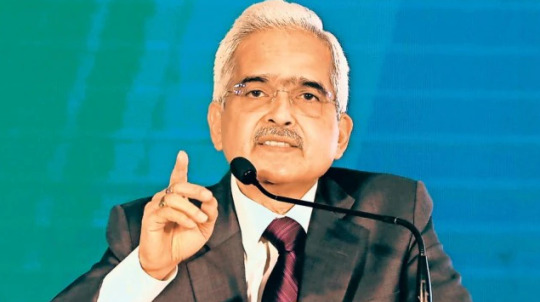
In another leap towards digital empowerment, the RBI introduced the retail direct mobile app. This app is designed to offer retail investors a seamless and user-friendly experience, providing easy access to the retail direct platform. Through this app, retail investors can transact in government securities (G-Secs) conveniently, directly from their smartphones. The retail direct platform was initially launched in November 2021 to facilitate individual investors' participation in government securities, and the mobile app further enhances this accessibility.
Additionally, the RBI unveiled a fintech repository, a reservoir of information on Indian fintech firms. This repository serves a dual purpose: enhancing regulatory understanding of the fintech sector and aiding in the formulation of appropriate policy frameworks. It's a step towards fostering innovation and collaboration within the fintech ecosystem, ensuring that regulatory measures align with industry developments.
As the financial landscape evolves, these initiatives reflect the RBI's commitment to embracing technology for the benefit of stakeholders. The retail direct mobile app and fintech repository not only simplify processes but also pave the way for a more informed and inclusive financial ecosystem.
0 notes
Text
0 notes
Text
The Rise of Digital Gold and Gold ETFs on Akshaya Tritiya
Akshaya Tritiya, also known as Akha Teej, is a special day for buying valuable items like gold, diamonds, vehicles, and more. It's believed to bring good luck, success, and prosperity if you make investments on this day.
Buying gold on Akshaya Tritiya has been a tradition for a long time, but nowadays, people are also exploring other options like digital gold, Sovereign Gold Bonds, Gold ETFs, and gold-linked stocks.
Digital gold, Gold ETFs, and Sovereign Gold Bonds have become more popular recently. Many people, especially younger investors, find it easier to buy gold through digital platforms rather than going to physical stores.
The price of gold in Delhi NCR is currently Rs 71,700 per 10 grams, compared to Rs 61,300 per 10 grams last year on Akshaya Tritiya. This means the one-year return on 24-carat gold is around 19%. Over the last 15-20 years, gold has delivered returns of about 12-13% on Akshaya Tritiya.
Gold ETFs are like stocks that invest in gold. They have become more popular, especially during the pandemic. The Assets Under Management (AUM) for Gold ETFs have grown significantly, showing a strong trend of investment in Gold ETFs.
Investing in Gold ETFs has several advantages, including liquidity, cost-effectiveness, and security. It eliminates the need for storing physical gold and provides the flexibility of investing on the stock exchange.
Sovereign Gold Bonds (SGBs) are government-backed securities that offer a secure way to own gold. They have an eight-year maturity period and can be bought directly from the government or from the stock market.
SGBs are tax-efficient and offer an interest of 2.5% per year in addition to capital gains from gold. Long-term capital gains from bond transfers benefit from indexation when SGBs are held until maturity, which exempts gains from tax.
Overall, while buying gold on Akshaya Tritiya can be a good opportunity, it's important to consider your preferences and risks. Both Gold ETFs and SGBs offer unique benefits, so it's important to choose based on your investment goals and needs.
0 notes
Text
Yes Bank Sees Record UPI Transactions After Paytm Partnership
Yes Bank's MD and CEO, Prashant Kumar, recently announced that their bank has seen a significant increase in monthly transactions on the unified payments interface (UPI) after partnering with Paytm. Before the partnership, Yes Bank had about 3.3 million transactions, but now they are seeing a record 5 million monthly transactions on UPI.
Yes Bank and Axis Bank joined the Paytm app on March 15, allowing users to create new handles. Yes Bank has introduced the @ptyes handle for its users.
Kumar mentioned that Yes Bank now holds around 55% market share in UPI transactions by merchants. This gives the bank an advantage in fee income and may lead to future opportunities for cross-selling products to merchants.
The partnership between Yes Bank and Paytm officially began on the last day mandated by the Reserve Bank of India (RBI) for Paytm Payments Bank Limited (PPBL) to cease its banking activities. PPBL previously supported UPI payments on Paytm's platform. With the transition, Paytm users are being shifted to alternate partner payment service provider (PSP) banks, including Yes Bank.
In a recent press release, Paytm stated that after receiving approval from the National Payments Corporation of India (NPCI), they have integrated with Axis Bank, HDFC Bank, State Bank of India (SBI), and Yes Bank under the multi-bank model. This integration allows users and merchants to continue UPI transactions and AutoPay mandates seamlessly.
Overall, the partnership between Yes Bank and Paytm has led to a significant increase in UPI transactions and market share for Yes Bank, providing new opportunities for revenue and customer engagement.
#upi payment gateway#upi#reserve bank of india#indian government#indian economy#upi transactions#finance
0 notes
Text
PM Modi Calls for Economic Self-Reliance: Key Takeaways from RBI's 90th Year Commemoration
Introduction: Prime Minister Narendra Modi addressed the commemoration of the Reserve Bank of India's 90th year, highlighting the imperative for India to enhance its economic self-reliance. Let's delve into the key insights from his speech and its implications for India's economic future.
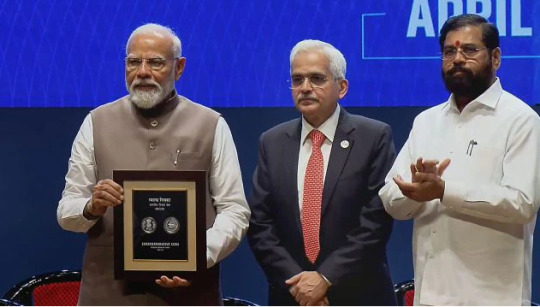
Content: Prime Minister Narendra Modi underscored the necessity for India to fortify its economic independence over the next decade. Emphasizing the importance of mitigating external challenges, Modi stressed the need to bolster the rupee's global acceptance and accessibility. With India's substantial contribution of 15% to global GDP growth, Modi positioned the nation as a crucial engine of global economic advancement.
India's aspiration to elevate the rupee to a global currency was underscored, with initiatives such as its inclusion in the Special Drawing Rights (SDR) basket and recalibration of the foreign portfolio investor (FPI) regime recommended by an RBI-appointed Inter-Departmental Group (IDG) last year.
PM Modi commended the RBI's efforts in revitalizing India's banking sector and economy, reminiscing about the challenges faced in 2014 and the significant strides made since then. Capital infusion of Rs 3.5 lakh crore in public sector banks and reforms aimed at strengthening governance have rejuvenated the banking sector's resilience. Notably, the Insolvency and Bankruptcy Code (IBC) facilitated the resolution of bad loans worth Rs 3.25 lakh crore, while gross NPAs plummeted to below 3%.
Modi attributed this transformation to the government's unwavering commitment, clear policies, and decisive actions. He emphasized the pivotal role of prudent financial policies, exemplified by the inflation targeting framework, in maintaining economic stability amidst global adversities. The government's strategic focus on fiscal consolidation and active price monitoring has contributed to moderating inflation levels, fostering an environment conducive to progress.
Conclusion: PM Modi's vision for India's economic self-reliance underscores the nation's resilience and determination to navigate global challenges. With concerted efforts towards bolstering the banking sector, fostering financial stability, and prioritizing inflation control, India is poised to realize its aspirations for sustainable economic growth in the years ahead.
0 notes
Text
Dearness Relief hiked to 50% - What does it mean for central government pensioners - know eligibility and payment details here | India Business News
Dearness Relief hike: The central government has recently announced a 4% hike in Dearness Relief (DR) for pensioners, effective from January 1, 2024. This adjustment will increase the DR to 50% for eligible pensioners. Eligibility and calculation details are provided in a March 13, 2024 Office Memorandum from the Department of Pension & Pensioners’ Welfare (DoPPW).Here’s what you need to know…
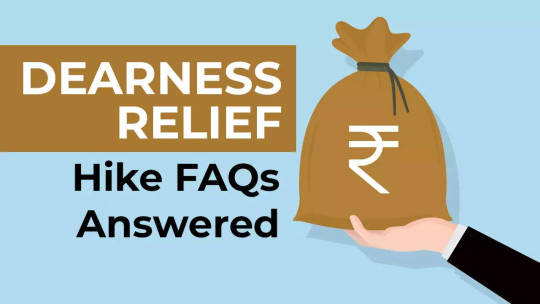
View On WordPress
#accountant general#business News#Dearness Relief#Dearness Relief hike#Dearness Relief hiked to 50%#Department of Justice#pension disbursing banks#pensioners#reserve Bank of India#State Bank Of India
0 notes
Text
RBI's Recent Changes in Investment Norms: What You Need to Know
The Reserve Bank of India (RBI) recently made some noteworthy adjustments to the norms governing investments in Alternative Investment Funds (AIFs) by banks, non-banking financial companies (NBFCs), and other lenders. These changes, announced on Wednesday, come as a modification to directives issued by the RBI in December last year.

Previously, the RBI had instructed banks, NBFCs, and other lenders to refrain from investing in any scheme of AIFs that included downstream investments in a debtor company. Downstream investments refer to the utilization of funds raised from AIF investors by the AIF to make direct investments in a company.
In a recent release, the RBI clarified that downstream investments should exclude investments in equity shares of the debtor company of the regulated entity (RE). However, all other investments, including those in hybrid instruments, would still be considered as downstream investments.
Furthermore, the RBI had earlier stipulated that if an AIF scheme, in which a regulated entity is already an investor, makes a downstream investment in a debtor company, the regulated entity must liquidate its investment in the scheme within 30 days from the date of such downstream investment. Failure to do so would result in a 100 percent provision requirement on such investments.
However, the recent amendments by the RBI specify that the 100 percent provision requirement will only be applicable to the extent of investment made by the regulated entity in the AIF scheme, which is further invested by the AIF in the debtor company. It won't be imposed on the entire investment of the regulated entity in the AIF scheme.
It's important to note that investments made by regulated entities in AIFs through intermediaries such as fund of funds or mutual funds are not covered under these revised norms on investment in AIFs.
These alterations aim to streamline the implementation process and ensure consistency among regulated entities. As the regulatory landscape evolves, staying informed about such changes is crucial for all stakeholders involved in investment activities.
0 notes
Text
RBI board : કેન્દ્રની નવી સરકારને RBI આપશે અધધધ..પોતાની રીઝર્વ રકમ, ગતવર્ષ કરતા આ વખતે 141 ટકા વધુ રકમ
RBI board : સામાન્ય ચૂંટણીના પરિણામો બાદ દેશમાં બનેલી નવી સરકારને રિઝર્વ બેંક ઓફ ઈન્ડિયા તરફથી મોટી રકમ મળવા જઈ રહી છે. સેન્ટ્રલ બેંકના બોર્ડે પ્રથમ વખત સરકારને 2.11 લાખ રૂપિયા ડિવિડન્ડ તરીકે આપવાનો નિર્ણય કર્યો છે. રિઝર્વ બેંક ઓફ ઈન્ડિયાએ બુધવારે તેની બેઠકમાં નાણાકીય વર્ષ 2024 માટે કેન્દ્ર સરકાર માટે રૂ. 2.11 લાખ કરોડના ડિવિડન્ડને મંજૂરી આપી હતી, જે નાણાકીય વર્ષ 23 ની તુલનામાં લગભગ 141 ટકા વધુ…
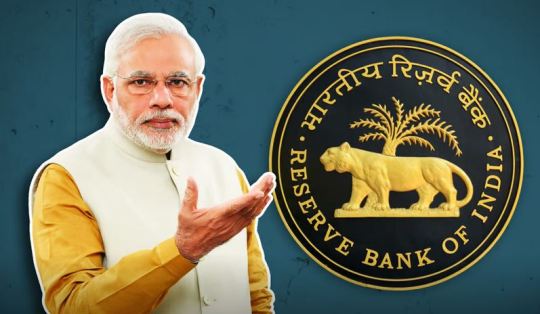
View On WordPress
#gujarat#india#board of the Central Bank#dividend#general elections#government#huge amount#INDIA#new government#RBI board#Reserve Bank of India#आम चुनाव#आरबीआई बोर्ड#��ुजरात#नई सरकार#बड़ी रकम#भारत#भारतीय रिजर्व बैंक#लाभांश#सरकार#सेंट्रल बैंक का बोर्ड#આરબીઆઈ બોર્ડ#ગુજરાત#ડિવિડન્ડ#નવી સરકાર#મોટી રકમ#રિઝર્વ બેંક ઓફ ઈન્ડિયા#સરકાર#સામાન્ય ચૂંટણી
0 notes
Text
#Sbiclerk #Free #Demo #Class #IBPS #SBI #RBI #Bankpo #Bankclerk #ibpspo #ibpsclerk #call9891726652 #brilliantacademyoflearning #laxminagar #delhi #bankpocoachingindelhi #bankpocoachinginlaxminagar #ibpscoachingindelhi #ibpsbankpoclasses #sbibankpoclasses

#brilliantacademyoflearning#call9891726652#delhi#laxminagar#bankclerk#bankpo#bank exams#reserve bank of india#bank#bankcoachinginstitute#bankclasses#bankclerkpreparation#bankcoachingclasses#ibps rrb#ibpspo#ibps clerk#ibpsexam#ibps#ibpscoaching#ibpsbankpocoaching#ibpsclerk#sbipreparation#sbipoexam#sbipo#sbiclerkexam#sbiclerk#sbi#bestbankpoclasses#bestbankcoachingindelhi#bestbankpocoachinginstitute
0 notes
Text
0 notes
Text
RBI Governor Discusses UPI Expansion Strategies with Stakeholders
Reserve Bank of India (RBI) Governor Shaktikanta Das met with important people involved in the unified payments interface (UPI) system to talk about ways to make UPI more widely used.
These people included banks, the National Payments Corporation of India (NPCI), companies that make UPI apps, and technology providers.
They talked about how to make UPI better, like making it work for more people and adding new features. They also discussed the problems they face and came up with new ideas to get more people using digital payments.
Deputy Governor T Rabi Sankar and other top RBI officials were also there. The RBI will now look at all the ideas and decide what to do next.
0 notes
Text
Policy Predictions Drive Indian Stock Market: Insights from RBI Study
A recent study by the Reserve Bank of India (RBI) found that Indian stock markets are more affected by expectations of future monetary policy changes than by actual policy rate surprises announced by the RBI. This aligns with the idea that stock markets are forward-looking. The study also noted that volatility in stock markets is influenced by both the announcement of policy changes and expectations about future policies, as traders adjust their portfolios throughout the day.
The study revealed that while surprises in repo rate changes have almost no effect on stock returns, expectations about future policy changes remain significant. This indicates that stock markets focus more on predicting future policy actions than reacting to actual rate changes. The analysis covered the period from January 2014 to July 2022, during which India adopted a flexible inflation targeting regime.
Overall, the study suggests that Indian stock markets are highly sensitive to expectations regarding future monetary policy, highlighting the importance of understanding market sentiments and expectations in analyzing stock market behavior.
0 notes
Link
Starting from October 8, banks will cease accepting Rs 2,000 notes for exchange. However, people can still exchange or deposit these notes following RBI guidelines from October 8, 2023.
#rbi policy#rbi mpc#RBI Issue Offices#Issue Offices#reserve bank of india#reserve bank#reserve bank governor#currency verification#bank note#2000 rupees#inr#2000 rupees note#deadline day#currency#value matters#two thousand rupees
0 notes
Text

0 notes